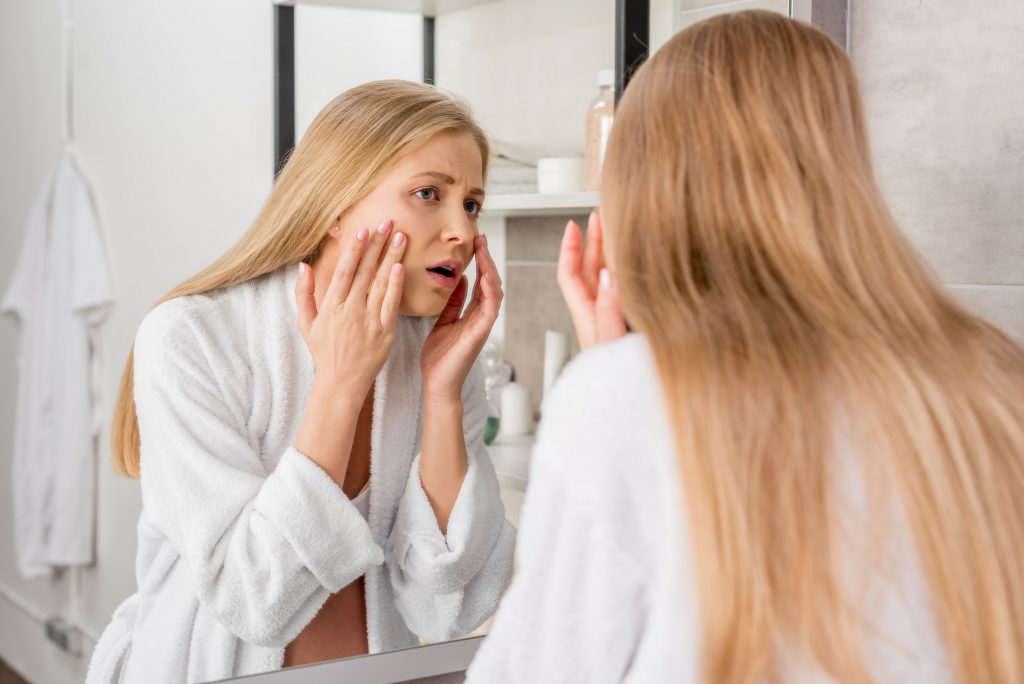If you’re ready to start a family, it may be time to examine the products that go into your daily self-care regimen. Many common cosmetic products contain chemicals in quantities that may not affect adults but can potentially harm a growing baby or possibly disrupt your hormonal balance when trying to conceive. From antibacterial soap to sunscreen–a variety of chemicals may be found in your beauty products.
Reading labels is your best defense. Here are a few products to consider.
Acne medication
Discuss the use of any acne medication with your doctor, as you may need to stop taking some medications for the duration of your pregnancy. Applying a topical antibiotic, such as clindamycin or erythromycin, is thought to be safe, but The American Academy of Dermatology recommends that women stop taking the oral antibiotics doxycycline, minocycline, and tetracycline before the 15th week of pregnancy. The use of these antibiotics has been associated with miscarriages and birth defects. Read more on topical acne treatments here.
Anti-aging creams
Avoid facial creams that contain retinoids, also known as tretinoins. This type of vitamin A speeds up cell division and prevents the breakdown of skin collagen for younger looking skin. The amount absorbed from the skin is very low, but there have been a few cases where tretinoin use was linked to birth defects.
Antibacterial soap
Soaps designed to kill germs often contain preservatives known as parabens, and some research suggests parabens may affect fertility in humans. Further studies are needed, but if you’re trying to conceive, you may want to check the labels and avoid products with propyl, butyl, isopropyl, isobutyl, and methyl parabens.
Antiperspirants
Antiperspirants use ingredients such as aluminum chloride hexahydrate and aluminium chlorohydrate to close skin pores and create a barrier between sweat glands and the skin surface. Research suggests that only a small amount of aluminum is absorbed through the skin, but aluminum has been associated with birth defects, so some pregnant women choose to avoid antiperspirants. Some antiperspirants have more aluminum than others.
Eyelash glue
The glue that holds on your eyelashes may contain formaldehyde, a chemical which can potentially harm the developing baby. While the amount used to connect lashes is small, there’s more of this volatile organic compound in everyday beauty products such as nail polishes, nail polish removers, and hair-styling products.
Hair dyes
There are thousands of ingredients in hair dyes, some of which are carcinogenic. Hair dyes are considered safe because only a small amount is absorbed through the skin, but irritations or breaks in the skin could lead to more exposure. That’s why some healthcare providers recommend waiting until the second trimester of pregnancy to use dye. To minimize the risk of absorbing hair dye chemicals, wear gloves when applying the dye, don’t leave chemicals on your hair longer than you have to, and rinse your scalp thoroughly after use.
Hair removal products
Hair removal products contain thioglycolic acid. So far, the effects of thioglycolic acid on pregnant women and their babies are unknown. The safest bet is switching to chemical-free methods of hair removal for the duration of your pregnancy.
Many of the cautions for cosmetic products are simply to reduce overall chemical exposure.
Hair sprays
Many hair sprays contain phthalates, which are being studied for their association with birth defects. Consider styling your hair with mousse or gel until your baby is born.
Hair straighteners
Research on hair straighteners has been limited. While most are considered to be safe, keratin hair treatments, also known as a Brazilian Blowout, can contain formaldehyde.
Nail polish and removers
Nail polish removers not only contain formaldehyde but also include the toxic chemicals acetone, methyl methacrylate, toluene, and ethyl acetate. One option for reducing your exposure to chemicals is to buy nail polish made without formaldehyde or toluene and bring that polish to the salon. While mani-pedis are a generally safe indulgence, check with your doctor before getting acrylics. Choose a well-ventilated salon to minimize exposure to fumes.
Perfumes
Many fragrances and products with fragrances may contain toxic phthalates, which can disturb fetal development.
Spray self tanners
Dihydroxyacetone (DHA) is a chemical found in spray tan products. When it interacts with skin proteins, it darkens pigment. Because it’s applied topically there are no warnings against using these products during pregnancy, but spraying any product can lead to the chemical being accidentally inhaled. DHA has been approved by the Food and Drug Administration for topical use only. It should not be eaten nor sprayed on the lips or eyes. Some studies link DHA exposure with DNA mutations.
Shampoos and conditioners
Shampoos are generally safe but opt for brands that don’t include paraben or fragrances. Prescription antifungal shampoo is usually fine, but you should discuss the use of cortisone shampoos with your doctor.
Skin lighteners
Skin lighteners contain hydroquinone, an organic compound which has been shown to cause birth defects in animals. Skin-lightening cosmetics may also contain tretinoin.

Sunscreens
It’s important to continue using sunscreen when pregnant, but choose products wisely. Avoid sunscreens with retinol or retinyl palmitate. In some research, the sunscreen ingredient oxybenzone was linked to low birth weight in female infants. Stick to sunblocks that use zinc oxide or titanium dioxide.
Inhaling sunscreen is more likely if you spray it on. That’s why lotions are preferable.
Many of the cautions for cosmetic products are simply to reduce overall chemical exposure. If you’re concerned about any specific cosmetic product, discuss its use with your doctor. Many products have such low doses of chemicals that they are safe on their own, but there are already so many chemicals in the environment that it’s safe to minimize exposure.

